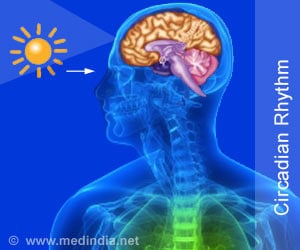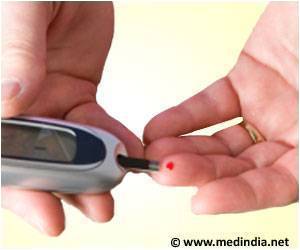Night shift workers are found to have low melatonin levels during the night, which affect their ability to repair DNA damage caused by free radicals.
- The presence of free radicals leads to DNA damage that occurs daily, which is considerably repaired during sleep at night.
- Night shift workers disrupt this pattern leading to poor efficiency of the repair mechanism.
- Melatonin levels were found to be associated with poor repair mechanism, with supplementation being a potential form of therapy.
Circadian Rhythm
Circadian rhythm is the pattern of sleeping at night when it is dark, and then remaining awake during most parts of the day when there is sunshine or brightness. This is a natural part of the life of humans as well as animals. Scientists who studied the circadian rhythm found that this alternating pattern of sleeping and waking was associated with the presence of darkness and daylight.The main aspect of sleep is governed by the extent of exposure to light or darkness. When there is light, the nerve pathway is stimulated from the retina of the eye to the hypothalamus of the brain. The suprachiasmatic nucleus (SCN) in the brain signals to the regions of the brain that are involved in regulating hormones, body temperature as well as other body functions that are associated with the state of wakefulness or sleep.
The SCN functions similar to a clock, which is why it is called an internal body clock, setting off a pattern of tasks that have an effect on the whole body. When the first rays of the sun or light of the day reach the body, the SCN starts carrying out functions that increase the temperature of the body while prompting the release of hormones like cortisol. This region of the brain is also found to suppress the release of melatonin, the hormone which is associated with inducing sleep, till many hours later or till darkness sets in.
Melatonin
Melatonin is a hormone secreted by the pineal gland, a pea-sized gland present near the mid brain region. The pineal gland remains inactive during the day but when the sun sets and there is darkness, this gland is activated and begins synthesizing melatonin. This is normally expected to occur around 9 p.m., around which time the level of melatonin is found to peak. There is reduction in alertness of the brain. The levels of melatonin remain high for nearly 12 hours, coinciding with night, and they drop around daytime. Melatonin levels are very low during the day.Suppressing melatonin
The scientists involved in the study showed that the inability to repair the DNA damage could be associated with the suppression of melatonin, a hormone that is known to regulate the internal body clock.The scientists involved in the study found in an earlier research study conducted by them that there was a lower level of a chemical formed as a by-product of DNA tissue repair (8-OH-dG) on night shift workers who slept during the day. This study was conducted on 223 night shift workers and the level of 8-OH-dG, the marker of DNA tissue repair, determined. The lower levels of the DNA tissue repair marker indicated that there was reduced DNA tissue repair. The scientists hypothesized that the major factors that lead to the reduced amount of DNA tissue repair could be suppression of melatonin.
Comparing DNA Tissue Repair Marker
In the current study the research team analyzed whether the level of 8-OH-dG might be lower among night shift workers when compared to people who work during the day and rest at night. The 8-OH-dG levels were measured from stored urine samples of 50 night shift workers, collected during the earlier study.The findings of the study were:
- The level of melatonin was a lot lower among night shift workers when they worked during the night than when they had a normal night’s sleep.
- Even after controlling for confounding factors like consumption of alcohol and shorter sleep during the day (5.5 hours), the level of 8-OH-dG was only 20% of the level that was found after a normal night’s sleep (7.5 hours of sleep)
Though this is an observational study, and the study participants were white males, which limits association with a multi-racial population, the initial findings do signify a potential health risk associated with altering the circadian rhythm.
The reduced production of melatonin among night shift workers was found to be associated with reduced level of urinary levels of 8-OH-dG, signifying the importance of a good night’s sleep. This finding can be used to encourage better sleeping habits at night, especially among adults who are habitual late sleepers due to poor lifestyle choices like watching television and other entertainment factors.
References:
- Parveen Bhatti, Dana K Mirick, Timothy W Randolph, Jicheng Gong, Diana Taibi Buchanan, Junfeng (Jim) Zhang, Scott Davis. Oxidative DNA damage during night shift work. Occupational and Environmental Medicine, (2017); oemed-2017-104414 DOI: 10.1136/oemed-2017-104414
- Melatonin and Sleep - (https://sleepfoundation.org/sleep-topics/melatonin-and-sleep)














